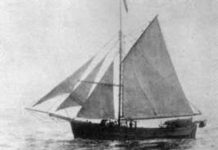
As soldiers fought the enemy in grim battles overseas in World War One, the Government of Canada fought another battle. The costs of war were extensive and money was urgently required. A plan was formulated to raise money from citizens and businesses. The money raised would be a loan, repayable with interest on specific terms.
Thus, the War Bond was established. A variety of products was available for investment: war savings stamps, war savings certificates and war bonds. The battle for investment was fought with enthusiastic patriotism, exuberant hope and high spirits.
From War Bonds to Victory Loans in WWI
Inaugurated with ceremonies, parades, colourful posters, and on occasion, celebrities, “the first domestic war loan was raised in November 1915,” said Norman Hillmer in the “Victory Loans” entry of the Canadian Encyclopedia. The name of the bonds changed for the fourth campaign in 1917, becoming Victory Loans. Canadians responded with generous hearts, opening their wallets and purses to buy the bonds.
“The First Victory Loan, with an issue of $150 million, 5.5% 5, 10 and 20 year gold bonds, was quickly oversubscribed,” said Hillmer. Canadians came up with the enormous amount of $398 million. Raising funds again in 1918 and 1919, the second and third Victory Loans raised the stunning number of $1.34 billion towards Canada’s war effort. The amount was particularly spectacular considering that many Canadians made only a few dollars per day in wages.
Young Canadians Participated in Victory Loans, Too
Canadians of all ages and locations felt a responsibility to support the war effort. A little Canadian girl living in Charleston, West Virginia made the news on November 4, 1918 when she mailed in $100 to buy two bonds, said the Global News in “Canada’s Victory Loan drive has raised $158 million so far.”
Kids at home saved their money to buy War Savings Stamps. The stamps were affixed into booklets and redeemed for cash after the war. The end of World War One brought an end to the Victory Loan campaign.
War Bonds Reinstated in WWII
On the eruption of World War Two, Canada was once again involved in the dreadful business of battle. The Victory Loan program was reinstated to raise the needed funds. Posters urged all to participate, shouting slogans such as “Doing my bit Four Years. Do yours. Buy Victory Bonds,” “Bring him home with the Victory Loan,” and “Come on, let’s finish the job. Buy Victory Bonds.” Women were encouraged to participate, too, with warm family-oriented posters with the slogan, “She’s in there fighting, too…”
On October 21, 1944, child star Shirley Temple added a dash of glamour to the selling of war bonds. She joined Canadian Prime Minister William Lyon Mackenzie King on Parliament Hill to announce that year’s new Victory Loan campaign. (Shirley Temple was 16 year old.)
Fund-Raising Competition Between Communities
“The newspapers were filled with huge advertisements promoting the purchase of the bonds,” said “Summerside’s War Effort During WWII” by Wyatt Heritage. Paying 3% interest, the bonds could be purchased through “salesmen during the national drives, from banks and trust companies, or through a Payroll Savings Plan.”
The Victory Loan campaign turned into a friendly competition between local citizens, cities and provinces. Summerside, Prince Edward Island was often in the lead with enormous generosity throughout the WWII drives. In the first loan campaign in 1941, the town received four pennants for going over the goal by 25%, and by the time it was all over,
Summerside was proudly 200% oversubscribed. “This outstanding success was echoed in later campaigns with Summerside repeatedly going “Over the Top,” even when the quota was consistently increased,” noted Wyatt Heritage.
Victory Loan flags were given to communities as a reward for significant contributions. A flag designed in 1919 featured Edward, Prince of Wales (Later King Edward VIII). Visiting Canada in September of that year, the young Prince Edward raised the flag in a Labour Day ceremony on Parliament Hill. “I hope every City and District will win my flag,” the Prince said, according to the Archives of Ontario. An image of the flag, the Prince and his words were incorporated into a poster, exclaiming “Let us win the Prince of Wales’ Flag. Victory Loan 1919.”
Campaigns Raised Billions in Victory Loans
Nine Victory Loan campaigns were issued during World War Two, from 1941 to 1945, raising nearly $12 billion, with “half of the money from corporations and the other half from civilians,” said CBC Digital Archives. Selling Victory Loans across the country in October and November of 1918, canvassers numbering well over 3,500 people were pounding the pavement to bring in money during a three-week campaign. “
Canvassing teams have come up with a total of $85,000,000, totalling an average of $7,000,000 for each of the twelve days,” said Global News on November 10, 1918. By that time, Canadians had contributed well over the $300 million needed to finance the war effort that year.
By the end of World War Two, Canadians had expressed financially their overwhelming support to trounce the enemy overseas. The Victory Loan bonds eventually developed into today’s familiar Canada Savings Bonds.
Sources:
- Hillmer, Norman, “Victory Loans,” The Canadian Encyclopedia
- “Shirley Temple rings in Canada’s Victory Loan,” CBC Digital Archives
- “Summerside’s War Effort During WWII: Victory Loans,” Wyatt Heritage
- “Ontario Pushes Canada Over the Top,” Global News
- “Canada’s Victory Loan drive has raised $158 million so far,” Global News
- “Victory Loans,” Archives of Ontario






